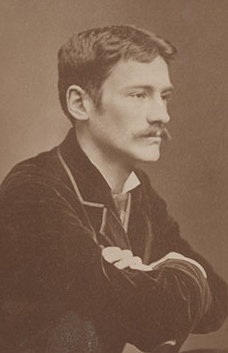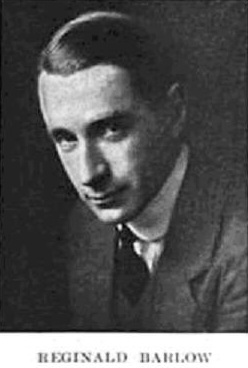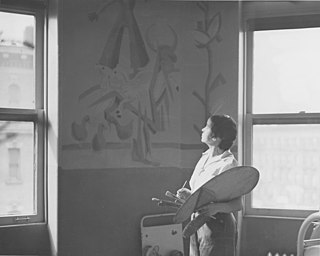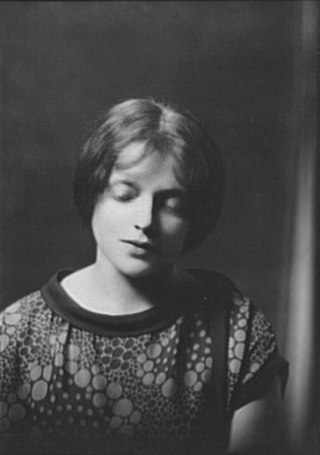Related Research Articles

General José Antonio Salcedo y Ramírez, known as "Pepillo" (1816–1864) was a 19th-century President of the Dominican Republic.

Charles H. "Colorado Charlie" Utter was a figure of the American Wild West, best known as a great friend and companion of Wild Bill Hickok. He was also friends with Calamity Jane.

Thomas Wilmer Dewing was an American painter working at the turn of the 20th century. Schooled in Paris, Dewing was noted for his figure paintings of aristocratic women. He was a founding member of the Ten American Painters and taught at the Art Students League of New York. The Freer Gallery of Art at the Smithsonian Institution has a collection of his works. He was the husband of fellow artist Maria Oakey Dewing.

William Joseph Mills was an American jurist who served three terms as the chief justice of the New Mexico Territorial Supreme Court and as the nineteenth and final Governor of New Mexico Territory.

Reginald Harry Barlow was an American stage and screen character actor, author, and film director. He was a busy performer in Hollywood films of the 1930s.
Scott Meredith, was a prominent American literary agent, and founder of the Scott Meredith Literary Agency. His clients included famous and successful writers such as Richard S. Prather, Morris West, Norman Mailer, J. G. Ballard, Arthur C. Clarke, P.G. Wodehouse and Philip K. Dick.
Bud Geary, was an American film actor. He appeared in 258 films between years 1920 and 1946.
Thomas Clinton, 3rd Earl of Lincoln, was an English peer, styled Lord Clinton from 1585 to 1616.

First Sergeant Mosheim Feaster was an American soldier in the U.S. Army who served with the 7th U.S. Cavalry during the Indian Wars. He was one of twenty men awarded the Medal of Honor for extraordinary gallantry at the Battle of Wounded Knee, but now called the Wounded Knee Massacre, on December 29, 1890. He later served in the Spanish–American War.

Webster Wells (1851–1916) was an American mathematician known primarily for his authorship of mathematical textbooks.

Latta Malette "LM" Autrey was an American politician who served one term as the 25th mayor of Orlando, Florida, from 1926 to 1929. Two of his former homes are now designated as historical landmarks, the Autrey-Williams House in Newton, Texas, built in 1912 and currently being restored by David Holmes, as well as the L. M. Autrey House in the Lake Eola Heights Neighborhood in Orlando, Florida.
John Loebs was an American politician. He was a member of the Wisconsin State Assembly.

Elba Lightfoot (1906-1989) was an African-American artist known for her work on the Works Progress Administration (WPA) murals at Harlem Hospital.

Dora Zaslavsky Koch was an American pianist who was one of the first graduates of and later a teacher at the Manhattan School of Music.
Almeda Sperry (1879–1957) was an American anarchist, political activist, and former prostitute. She is known for the passionate love letters she wrote to fellow anarchist Emma Goldman. The letters allude to past sexual encounters between the two women, although the extent to which Goldman may have reciprocated the romantic feelings expressed by Sperry is unknown.
Elizabeth Clinton, Countess of Lincoln was an English noblewoman and writer. She was Countess of Lincoln from 1616 until the death of her husband Thomas Clinton, 3rd Earl of Lincoln, in 1619, then Dowager Countess. Her pamphlet on child-raising, The Countess of Lincoln's Nursery, gained praise.

Anthony M. Scibelli (1911-1998) was the longest-serving representative in the history of the Massachusetts House of Representatives. He served the South End of Springfield, Massachusetts, the Tenth District in Hampden County, for 48 years, until he died in 1999.
Captain Ralph Erksine Peasley "Captain Matt" was a sea captain from the Pacific Northwest who became famous due to a popular series of short stories by Peter Bernard Kyne called Cappy Ricks or the Subjugation of Matt Peasley.

Edward Renouf was an American chemist and chemistry professor, known for having helped found the chemistry department and research laboratory at Johns Hopkins University, and for his authorship of chemistry textbooks.

Ludvig Sandöe Ipsen was a Danish-American artist and designer. Trained as an architect, he is known for his designs in a wide variety of disciplines.
References
- ↑ "United States Census, 1910," database with images, FamilySearch (https://familysearch.org/ark:/61903/1:1:MLNJ-DXG : accessed 23 February 2019), Nathaniel R White in household of John S White, Union, Brown, Ohio, United States; citing enumeration district (ED) ED 23, sheet 4A, family 86, NARA microfilm publication T624 (Washington D.C.: National Archives and Records Administration, 1982), roll 1157; FHL microfilm 1,375,170.
- ↑ "Class of 1931" (PDF). Southwestern News. Vol. XIX, no. 6. July 1957. p. 7. Retrieved February 21, 2019.
- 1 2 3 4 5 6 "Notices". Christian Science Sentinel . Vol. 71, no. 28. July 12, 1969. Retrieved February 22, 2019.
- 1 2 "White called to Boston". The Cincinnati Enquirer . Vol. XCVIL, no. 90 (Kentucky ed.). July 7, 1937. p. 10. Retrieved February 23, 2019.
- ↑ "Column Right!". The Dayton Herald . Vol. LVIII, no. 133 (Home ed.). July 4, 1937. p. 18. Retrieved February 23, 2019.
- ↑ "Gracean Pedley's Lyon County Herald has best editorial in state weeklies". The Owensboro Messenger . Vol. 62, no. 119. Associated Press. June 12, 1936. p. 4. Retrieved February 23, 2019.
- 1 2 3 4 5 Canham, Erwin D. (1958). Commitment to Freedom: The Story of The Christian Science Monitor. Boston: Houghton Mifflin Company. pp. 276, 327–8, 337. LCCN 58-9055.
- ↑ LaBorde, Adras (February 1, 1954). "Talk of the Town". Alexandria Daily Town Talk . Vol. LXXI, no. 275 (Home Final ed.). p. 6. Retrieved February 21, 2019.
- ↑ "Writers receive 1959 Loeb Awards". The New York Times . June 10, 1959. p. 75. Retrieved February 6, 2019.
- ↑ "Sees commanding lead over red output". Fort Lauderdale News . June 9, 1960. p. 9-D. Retrieved February 14, 2019– via Newspapers.com.
- ↑ Fischer, Heinze-D; Fischer, Erika J. (2003). Complete Historical Handbook of the Pulitzer Prize System 1917–2000. Vol. Part F/Volume 17. Munich: K. G. Saur. p. 80. ISBN 3-598-30187-1 . Retrieved February 22, 2019.
- ↑ "WNET Licensing (A's)" (PDF). WNET . October 31, 2017. Retrieved February 22, 2019.
- ↑ "New Century Club to hear Nate White". The Boston Globe . Vol. CLXXXI, no. 38 (Evening ed.). February 2, 1962. p. 6. Retrieved February 22, 2019.
- 1 2 "White to give lecture". The Post-Star . Vol. 70, no. 157. June 6, 1974. p. 17. Retrieved February 22, 2019.
- ↑ "Churches schedule guest speakers". Sunday Journal and Star . Vol. 103, no. 103. December 2, 1973. p. 11E. Retrieved February 22, 2019.
- ↑ White, Nathan Ridgway (November 17, 1971). "The Continuity of Good". cslectures.org. Retrieved February 22, 2019.
- ↑ "United States Census, 1940," database with images, FamilySearch (https://familysearch.org/ark:/61903/1:1:K9Q7-S12 : 14 March 2018), Nathaniel R White, Tract 6E, Berkeley, Oakland Judicial Township, Alameda, California, United States; citing enumeration district (ED) 1-156, sheet 62A, line 21, family, Sixteenth Census of the United States, 1940, NARA digital publication T627. Records of the Bureau of the Census, 1790 - 2007, RG 29. Washington, D.C.: National Archives and Records Administration, 2012, roll 190.
- ↑ "Florida Death Index, 1877-1998," database, FamilySearch (https://familysearch.org/ark:/61903/1:1:VVJV-R4R : 25 December 2014), Nathaniel Ridgeway White, 25 Apr 1984; from "Florida Death Index, 1877-1998," index, Ancestry (www.ancestry.com : 2004); citing vol., certificate number 39212, Florida Department of Health, Office of Vital Records, Jacksonville.